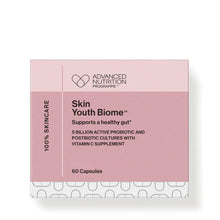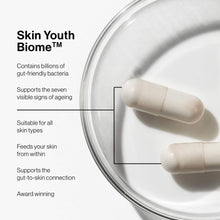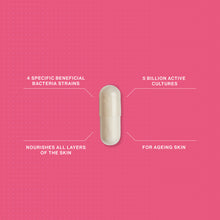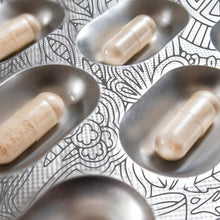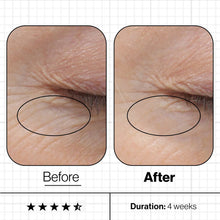
- +How To Use
- One capsule daily with a meal is recommended. Supplements are more effective if taken with food, especially protein.
- +Benefits
- Works from the inside out. Supports the skin's natural barrier. Helps reduce fine lines. Helps support healthy gut flora. Supports collagen formation.* Supports immunity.* * Vitamin C contributes to the maintenance of normal skin and the normal function of the immune system. *Vitamin C contributes to the normal production of collagen. Efficacy Study Results Results based on a 12-week study conducted on 30 female participants with no topical regimen and no additional supplements taken. Marked improvements in skin quality were observed: 100% of participants saw improvement in one or more signs of aging. 97% saw a reduction in uneven skin tone. 94% saw a reduction in redness. ↑ 43% Hydration ↓ 25% Transepidermal water loss (TEWL) ↓ 26% Wrinkle depth ↑ 5% Smoothness ↑ 3% Elasticity Suitable for: All skin types. Vegetarian. Gluten-free.
- +Ingredients
- Potato starch, microorganism complex (Lactobacillus rhamnosus GG, Pediococcus acidilactici HA-524®, Bifidobacterium longum Rosell®-175, Lactobacillus reuteri HA-188, postbiotic: Lactobacillus acidophilus HA-122, postbiotic: Lactobacillus plantarum HA-119) (contains MILK, SOY), vegetable capsule shell (hydroxypropyl methylcellulose), vitamin C (ascorbic acid), anti-caking agent: vegetable magnesium stearate. Key Ingredients: Vitamin C Vitamin C contributes to normal collagen formation for the normal function of skin and to the normal function of the immune system. Lactobacillus Rhamnosus GG A type of bacteria found in your intestines. It's found in many foods including kimchi, miso and sauerkraut. Pediococcus Acidilactici HA-524 This is a species often found in pairs or tetrads and is added as beneficial microbes in the creation of cheeses and yoghurts. Bifidobacterium Longum Rosell-175 Helps to break down most sugars in food and is present in seaweed, yoghurt, and kimchi. Lactobacillus Reuteri HA-188 First isolated in 1962 and is a lactic acid bacteria which is found in a variety of cheeses. Lactobacillus Acidophilus HA-122 Occurs naturally in the human body and is found in fermented foods including miso, tempeh, sauerkraut, and yoghurt. Lactobacillus Plantarum HA-119 Lactobacillus is found in sourdough bread. As well as brine olives and pickles. Please be aware that ingredient lists may change or vary from time to time. Please refer to the ingredient list on the product package you receive for the most up-to-date list of ingredients.
- +Share






